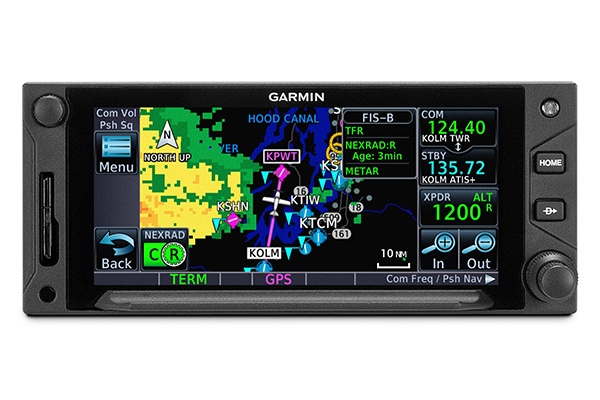Picking up from where I left off last time, I decided on short notice to try again for a mini cross country to a few of the local fields. Checking the weather the night before showed that it would be a beautiful day for flying, with light winds, clear skies, and much less haze and smoke than in past weeks. I was also hoping for one of the 172s with the updated avionics to again practice some of the GPS and ADS-B In functions in real time.
When planning the route as a flight-only trip (e.g., no stops or touch and go's) the trip is estimated at just about one hour. Knowing that I'd want to not be pressed for time and be able to just have a bit of a wander, I scheduled the plane for five hours, and ended up putting nearly three on the Hobbs meter. This just reinforces how much extra time to allow when planning any long flight, especially for fuel stops or other diversions.
One of the key differences between any "cross country" flight and something more local is that the various waypoints or destination are beyond the visible horizon (even more so on a hazy day). It's therefore even more important to understand navigation, engine (and fuel) management, and how to use the various tools at one's disposal to stay on course and on schedule for fuel. In this case, the trip length would be well within the plane's fuel capacity, and I had the tanks topped off before the flight. So while that wouldn't be an issue, I would be able to try out some of the features on the Garmin GTN650.
Compared to panel-mounted GPS units from 15 years ago, those available today have a great deal more functionality, touchscreens, and more intuitive user interfaces and menu trees. But this means learning a whole new system even if it is coming from the same manufacturer. For today's flight, I made sure I could work the basic radio functions, find the right navigation screen, explore the direct-to function, and experiment with flight plans. I must say - even if the features were otherwise identical, the touchscreen interface makes a world of difference and helps (me anyway) quickly switch back and forth between head-down and looking outside. The old Garmin with menu choices driven by a twist-and-push knob had me looking inside a bit too much.
The flight itself was just fun. Being able to navigate to unfamiliar uncontrolled fields, pick up weather along the way, enter the pattern, and practice some landings with no glideslope lighting really made this a great day. Even though the legs between each field were short, I still was able to go through the typical profile of climb, cruise, descent, and approach with time to do the regular GUMPS check. I even remembered to spend about 10 minutes on the right tank only, with the accompanying mental preparation for an engine failure upon switching tanks back and forth (everything was just fine however). I also got to just putter around the sky under 3,000 feet AGL and sightsee for a bit.
Each of my three stops were deserted fields, so I would just do one or two landings and then fly on to the next. But back at the home base, it was a busy day with other school aircraft and a few fast movers - a twin and a regional jet.
Upon coming within about eight miles, I heard the twin report inbound as I was picking up the weather. The winds were light, so either direction runway would have been fine for me. I let the faster aircraft set the pace, and called them up to ask which runway they were setting up for. When they responded back, we were able to coordinate how I would come in underneath their flight path and enter the downwind behind them. I even threw in an S-turn to put a bit more distance between us.
On the next pattern, I was following another school Cessna, but faster plane was also entering the pattern and ending up in front of us all. I think the other Cessna could have just slowed a bit more, but he decided to do a 360 turn, so I (being just a mile or so behind him) also did the same. From the ground, we probably looked like a perfectly choreographed formation flight... The only problem with that is having to reacquire visual contact once I came out of the turn. No worries.
Finally, on the last pattern of the day, a regional jet blasted its way in from the upwind side of the field. I could see him coming in as I climbed out, and could also verify his location with the ADS-B In traffic display. That's a great tool and I hope to be able to make good use of it if I'm ever in some seriously busy airspace. Around these parts it's more of a novelty item.
All in all, this was a good confidence booster that I could manage the key aspects of the flight - controlling the airplane, navigating "cross country", managing the systems, and coordinating with other aircraft in the uncontrolled (or as some call it, "pilot controlled") airport environment. Like so many other flights, there are things to improve on but we'll save them for next time.


No comments:
Post a Comment